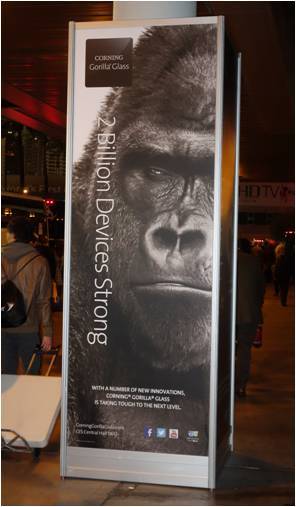The value delivered through internet connectivity took center stage.
Returning from CES, I'm writing this draft at 4 a.m., wide awake from jet lag. Once again, I'd like to share my unique perspective on the relationship between digital and products as seen at CES, and its impact on marketing.
From the Internet of Things to the Internet of Everything
In my previous on-site report, I blurted out, "It's all about the Internet of Things!" Subsequently, John Chambers, CEO of Cisco Systems, a major internet connectivity equipment provider, proposed IoE (Internet of Everything) as the next step beyond IoT. IoE expands IoT further, encompassing not just objects connecting to the internet, but the concept of situations and processes where necessary information is provided to people and objects at the required time and place. Essentially, various objects connect to the net, and when needed, where needed, objects themselves provide information to people. Or, through communication between objects, new value is created.

John Chambers, CEO of Cisco Systems, who advocates for IoE
In his keynote address, Chambers proposed that IoT represents a $19 trillion market across the public and private sectors, creating $14.4 trillion in new revenue opportunities and cost savings in the private sector and $4.6 trillion in the public sector.
Product value is shifting toward value delivered through internet connectivity
Through CES, I experienced products from various companies in telecommunications, automotive, home appliances, fitness, healthcare, and more, gaining insight into the perspectives of U.S. executives and CMOs. A common theme was the emphasis placed on "value delivered through internet connectivity" as a critical factor determining product value and competitive advantage. With IoT and IoE now a reality, it became clear that the future will see connectivity as a fundamental requirement not just for smart appliances, but for all products. This means that even for products traditionally distant from IT or digital technology, the touchpoints between consumers and digital devices (smartphones will likely dominate here) will become a crucial element alongside the product's functions, value, and design. Moving forward, marketers responsible for numerous products will be compelled to consider the new value their products can deliver through internet connectivity. Consequently, the same level of effort invested in product design will likely impact product value when applied to digital touchpoints—specifically the UI, design, and functionality of smartphone apps and similar interfaces.
The author believes CES 2014 offered a glimpse into the near future, revealing the relationship between products and digital technology—specifically, how the competitiveness of all products could soon be determined by digital and technological capabilities.
Bonus: An advertisement that caught my attention at CES
Now, there is an advertisement that has caught my attention in recent years at CES. It is an advertisement for Gorilla Glass by Corning, Inc. Gorilla Glass is not a product that ordinary people usually purchase. It is the brand name of high-strength glass procured by manufacturers who develop and manufacture mobile devices such as smartphones and tablet PCs.
So why did it catch my attention? It was because of the Gorilla Glass advertisement.

Corning's Gorilla Glass advertisement
This high-strength glass, a B2B product, has been named Gorilla Glass, and Corning is promoting it with gorilla imagery in exhibitions and OOH advertising. Corning's Gorilla Glass communication has established a brand despite being a B2B product, and I imagine it is highly recognizable as a brand of high-performance glass. What kind of positive impact and quantitative value does establishing a brand for a B2B product have on business, specifically in the context of business negotiations? Every time I see Gorilla Glass advertisements at CES, I find myself thinking about the potential of B2B advertising.

At the CES Press Center Author





